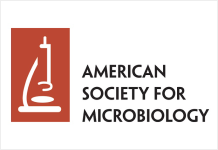
Throwing away one of Britain’s few GDP-positive industries by adopting an unsustainable Open Access model would “destroy the fabric of scientific communications”, Dr Robert Parker warned Cambridge MP Julian Huppert today.
The RSC Chief Executive said scientific publishers are approaching a critical juncture in relation to Open Access publishing, as both the government and the Research Councils UK (RCUK) currently review the model with a number of options being considered.
Dr Parker welcomed Dr Huppert to the RSC’s home at Thomas Graham House, Cambridge Science Park, at the launch of the society’s latest journal, Biomaterials Science, but cautioned the government and funding bodies not to undermine the effectiveness of scientific communications, an area in which UK organisations excel.
Dr Parker said: “The vast majority of RSC published research now comes from the international arena and our ability to effectively disseminate scientific knowledge through our publishing activities, which is a primary objective set out in our Royal Charter, must not be undermined by adopting an ill-thought out Open Access model.
“In addition, UK-based scientific publishers contribute an enormous amount to the UK economy and unlike some other industries, publishing has never had or needed specific support or subsidy or tax breaks from government so to damage that in any way now would be an act of madness.”
The RSC has responded to the RCUK’s Proposed Policy on Access to Research Outputs to help inform RCUK on enhancing scientific communications in a sustainable manner and looks forward to receiving its findings.
Dr Parker added: “There are two systems of ‘Open Access’ being discussed at the moment: Green Open Access, where a version of a paper is made available via a subject or institutional repository after an embargo period of between six and 24 months; and Gold Open Access, where funding is made available to support authors so their final article is made immediately available to all.
“The RSC supports sustainable Open Access and we believe the Gold method is a more sustainable model whereas the Green method is expensive to maintain, unsustainable and threatens to destabilise successful and effective scientific communications.
“Adopting the wrong model will destroy the fabric of scientific communications as we know it.”
Under the RSC’s ‘Open Science’ model, authors are currently offered the option of paying a fee in exchange for making their peer reviewed research paper openly available to all via the renowned RSC web platform.
Dr Huppert, one of only two MPs with science PhDs, said: “The Royal Society of Chemistry continues to go from strength to strength with a burgeoning publishing portfolio and a growing international presence, as exemplified by adding Biomaterials Science to its stable today.
“The RSC has a global reach, but its home is very much at the heart of Cambridge, with most of its 412 employees based at the Science Park meaning the RSC is easily the largest organisation in Europe for advancing the chemical sciences.
“In addition to its publishing duties, the RSC plays a central role in providing politicians and policy makers with evidence of the vital role chemistry will play to solve the big issues facing society: from energy, the environment and drug discovery to name just a few.”
Biomaterials Science is a collaborative venture between the RSC and the Institute for Integrated Cell-Material Sciences (iCeMS), Kyoto University, Japan. It will be a multidisciplinary journal covering the fundamental science of biomaterials and their potential biomedical applications.
Norio Nakatsuji, Professor and Director at WPI Institute for Integrated Cell-Material Sciences, Kyoto University, has been appointed co-editor-in-chief of the new journal.
He said: “With the launch of the new journal we seek to present a global platform for fundamental research as well as varied applications of this rapidly expanding field created at the crossing point of biology, chemistry, and physics.”
























